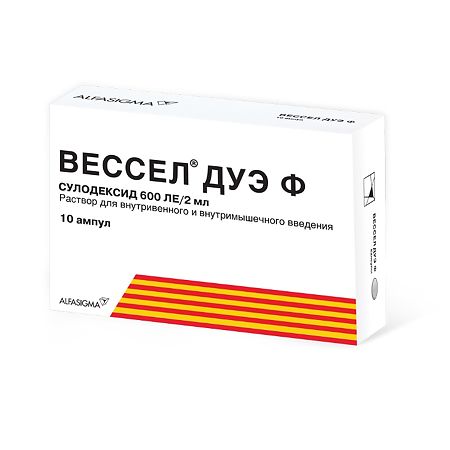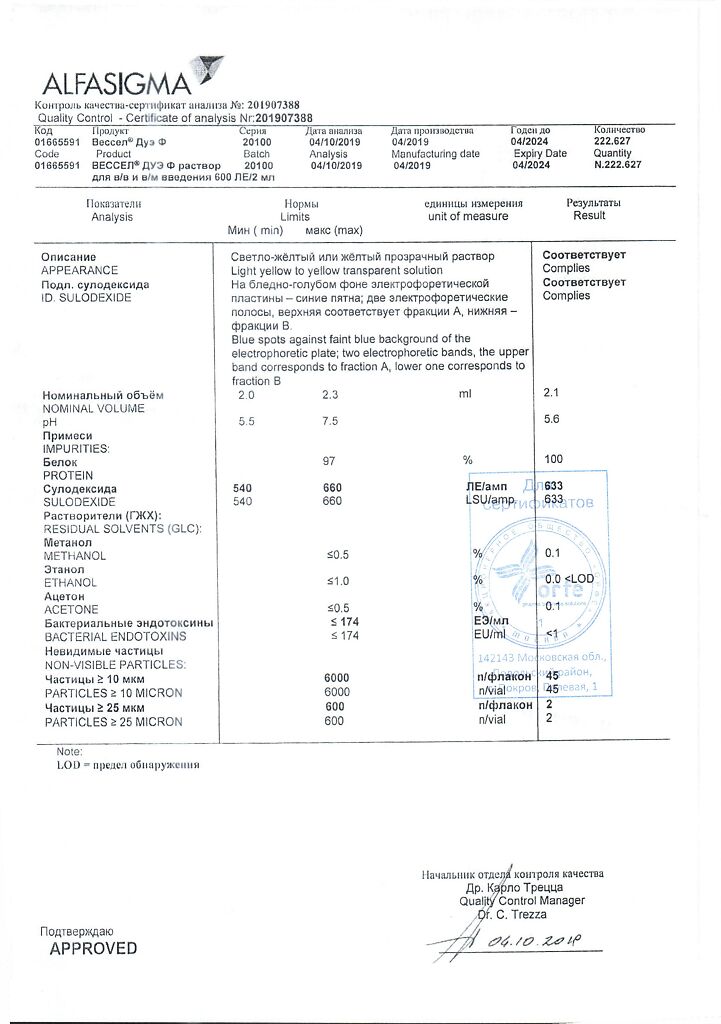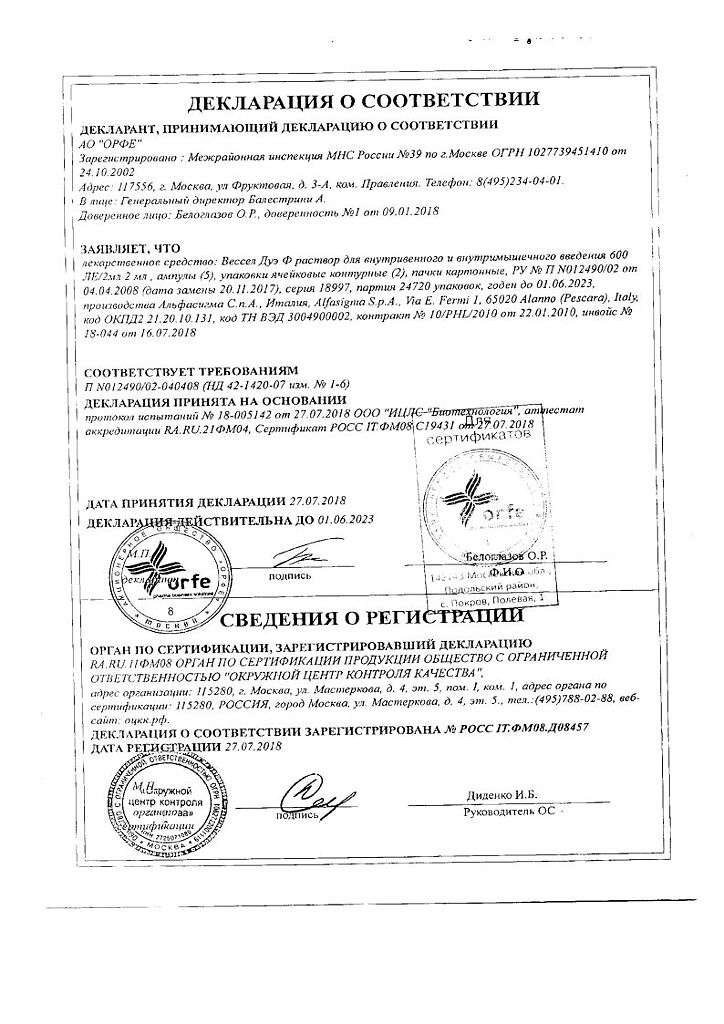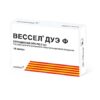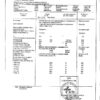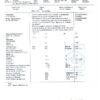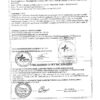No products in the cart.
Vessel Due F, 600 le/2ml 2 ml 10 pcs
€90.88 €84.31
Description
Vessel® Due F (sulodexide) is a biological medicine which is a natural mixture of glycosaminoglycans (GAGs): a heparin-like fraction with a molecular weight of 8000 dalton (80%) and dermatansulfate (20%).
The mechanism of action of sulodexide is due to two main properties: the fast acting heparin-like fraction has an affinity for antithrombin III (ATIII) and the dermatan-like fraction has an affinity for heparin cofactor II (KGII).
Pharmacological action:
angioprotective, profibrinolytic, anticoagulant, antithrombotic.
Pharmacodynamics
The angioprotective effect is associated with restoration of structural and functional integrity of vascular endothelial cells, with restoration of the normal density of the negative electric charge of pores of the basal membrane of vessels. Besides, the preparation normalizes rheological properties of blood due to reduction of triglycerides level (it stimulates lipolytic enzyme – lipoprotein lipase which hydrolyzes triglycerides being a part of LDL).
The effectiveness of the drug in diabetic nephropathy is determined by the ability of sulodexide to decrease the thickness of basal membrane and extracellular matrix production due to decrease of mesangium cell proliferation.
Profibrinolytic effect is due to an increase in blood levels of tissue plasminogen activator and a decrease of its inhibitor.
The anticoagulant effect of the solution for intravenous and intramuscular administration, which is weakly expressed in the suggested dosage (one ampoule per day) is due to affinity for antithrombin and heparin cofactor II, which consistently reduces the concentrations of activated factor X and thrombin.
The antithrombotic activity is the result of all the actions that sulodexide has on the vascular wall (angioprotective effect), fibrinolysis (profibrinolytic effect), blood clotting (weak anticoagulant effect) and inhibition of platelet adhesion.
Pharmacokinetics
The absorption of sulodexide administered intravenously or intramuscularly is fairly rapid and depends on the rate of blood circulation at the injection site. Plasma concentrations of sulodexide after internal bolus administration of a single dose of 50 mg after 15, 30, and 60 minutes were 3.86 ± 0.37 mg/L, 1.87 ± 0.39 mg/L, and 0.98 ± 0.09 mg/L, respectively.
Sulodexide is distributed in the vascular endothelium at a concentration 20-30 times greater than that in other tissues. It is metabolized in the liver and excreted mainly by the kidneys. In a study of the radioactive labeled drug, 55.23% of sulodexide was excreted with the urine during the first 96 hours.
Indications
Indications
– angiopathy with an increased risk of thrombosis, including after myocardial infarction;
– cerebrovascular accident, including the acute period of ischemic stroke and the period of early recovery; discirculatory encephalopathy caused by atherosclerosis, diabetes mellitus, hypertension; vascular dementia;
– occlusive lesions of peripheral arteries of both atherosclerotic and diabetic origin;
– phlebopathy, deep vein thrombosis;
– microangiopathy (nephropathy, retinopathy, neuropathy) and macroangiopathy in diabetes mellitus (diabetic foot syndrome, encephalopathy, cardiopathy);
– thrombophilic conditions, antiphospholipid syndrome (prescribed together with acetylsalicylic acid, as well as following low molecular weight heparins);
– treatment of heparin-induced thrombotic thrombocytopenia, since it does not cause or aggravate it.
Pharmacological effect
Pharmacological effect
Wessel® Due F (sulodexide) is a biological medicinal product that is a natural mixture of glycosaminoglycans (GAGs): a heparin-like fraction with a molecular weight of 8000 daltons (80%) and dermatan sulfate (20%).
The mechanism of action of sulodexide is due to two main properties: the fast-acting heparin-like fraction has an affinity for antithrombin III (ATIII), and the dermatan fraction has an affinity for heparin cofactor II (CHII).
Pharmacological action:
angioprotective, profibrinolytic, anticoagulant, antithrombotic.
Pharmacodynamics
The angioprotective effect is associated with the restoration of the structural and functional integrity of vascular endothelial cells, with the restoration of the normal density of the negative electrical charge of the pores of the vascular basement membrane. In addition, the drug normalizes the rheological properties of the blood by reducing the level of triglycerides (stimulates the lipolytic enzyme – lipoprotein lipase, which hydrolyzes triglycerides that are part of LDL).
The effectiveness of the drug in diabetic nephropathy is determined by the ability of sulodexide to reduce the thickness of the basement membrane and the production of extracellular matrix by reducing the proliferation of mesangium cells.
The profibrinolytic effect is due to an increase in the blood level of tissue plasminogen activator and a decrease in the content of its inhibitor.
The anticoagulant effect of the solution for intravenous and intramuscular administration, which is weakly expressed in the proposed dosage (one ampoule per day), is manifested due to its affinity for antithrombin and cofactor II of heparin, which consistently reduces the concentrations of activated factor X and thrombin.
Antithrombotic activity is the result of all types of action that sulodexide has on the vascular wall (angioprotective effect), fibrinolysis (profibrinolytic effect), blood coagulation (weak anticoagulant effect) and inhibition of platelet adhesion.
Pharmacokinetics
Absorption of sulodexide administered intravenously or intramuscularly is quite rapid and depends on the speed of blood circulation at the injection site. Plasma concentrations of sulodexide after internal bolus administration of a single dose of 50 mg after 15, 30 and 60 minutes were 3.86 ± 0.37 mg/L, 1.87 ± 0.39 mg/L and 0.98 ± 0.09 mg/L, respectively.
Sulodexide is distributed in the vascular endothelium in a concentration 20-30 times higher than the concentration in other tissues. Metabolized in the liver and excreted mainly by the kidneys. In a radiolabeled study, 55.23% of sulodexide was excreted in urine during the first 96 hours.
Special instructions
Special instructions
At the beginning and end of treatment, it is advisable to determine the following indicators: activated partial thromboplastin time, antithrombin III, bleeding time and coagulation time. Wessel® Due F increases the normal values of activated partial thromboplastin time by approximately one and a half times.
Impact on the ability to drive vehicles and machinery
Wessel® Due F does not affect the ability to drive vehicles and machinery.
Active ingredient
Active ingredient
Sulodexide
Composition
Composition
Each ampoule (2 ml) contains:
Active substance:
sulodexide 600 LE*
Excipients:
sodium chloride 18 mg,
water for injections up to 2 ml.
* – lipoprotein lipase unit
Pregnancy
Pregnancy
During pregnancy, Vessel Due F is prescribed under the strict supervision of a doctor.
There is positive experience of use for the treatment and prevention of vascular complications in patients with type 1 diabetes in the II and III trimesters of pregnancy, with the development of late toxicosis of pregnancy – gestosis.
Contraindications
Contraindications
– hypersensitivity;
– hemorrhagic diathesis and diseases accompanied by decreased blood clotting;
– pregnancy first trimester.
With caution:
– When used together with anticoagulants, blood clotting parameters should be monitored.
Side Effects
Side Effects
According to clinical studies
Data on the incidence of adverse drug reactions associated with the use of sulodexide were obtained from clinical studies involving patients treated with standard doses of the drug for the usual duration of therapy.
Adverse reactions associated with the use of sulodexide were classified by system-organ class and distributed according to frequency of occurrence in the following order: very common (≥ 1/10), common (≥ 1/100 to < 1/10), uncommon (≥ 1/1000 to < 1/100), rare (≥ 1/10000 to < 1/1000), very rare (< 1/10000).
Nervous system: uncommon – headache, very rare – loss of consciousness.
Hearing organ: often – dizziness.
Gastrointestinal tract: often – pain in the upper abdomen, diarrhea, nausea, infrequently – abdominal discomfort, dyspepsia, flatulence, vomiting, very rarely – gastric bleeding.
Allergic reactions: often – skin rash of various localizations, infrequently – eczema, erythema, urticaria. General disorders and disorders at the injection site: infrequently – pain at the injection site, hematoma at the injection site, very rarely – peripheral edema.
According to post-registration observations.
Additional adverse events have been reported during post-marketing use of sulodexide. The frequency of these undesirable effects cannot be assessed due to the fact that information about them comes in the form of spontaneous reports. Accordingly, the frequency of these adverse events is classified as “unknown” (cannot be calculated from available data).
From the psyche: derealization.
From the nervous system: convulsions, tremors.
From the organ of vision: visual disturbances.
From the cardiovascular system: palpitations, hot flashes.
From the respiratory system, chest and mediastinal organs: hemoptysis.
From the skin and subcutaneous tissues: skin itching, purpura, generalized erythema.
From the urinary system: stenosis of the bladder neck, dysuria. General disorders and disorders at the injection site: chest pain, pain, burning at the injection site.
Interaction
Interaction
No significant interaction of Wessel® Due F with other drugs has been established. When using sulodexide, it is not recommended to simultaneously use drugs that affect the hemostasis system as anticoagulants (direct and indirect).
Overdose
Overdose
Bleeding is the only phenomenon that can occur with an overdose.
Storage conditions
Storage conditions
At a temperature not exceeding 30 °C
Shelf life
Shelf life
5 years
Manufacturer
Manufacturer
Alfasigma S.p.A., Italy
Additional information
| Shelf life | 5 years |
|---|---|
| Conditions of storage | At a temperature not exceeding 30 °C |
| Manufacturer | Alphasigma S.p.A., Italy |
| Medication form | solution |
| Brand | Alphasigma S.p.A. |
Related products
Buy Vessel Due F, 600 le/2ml 2 ml 10 pcs with delivery to USA, UK, Europe and over 120 other countries.

